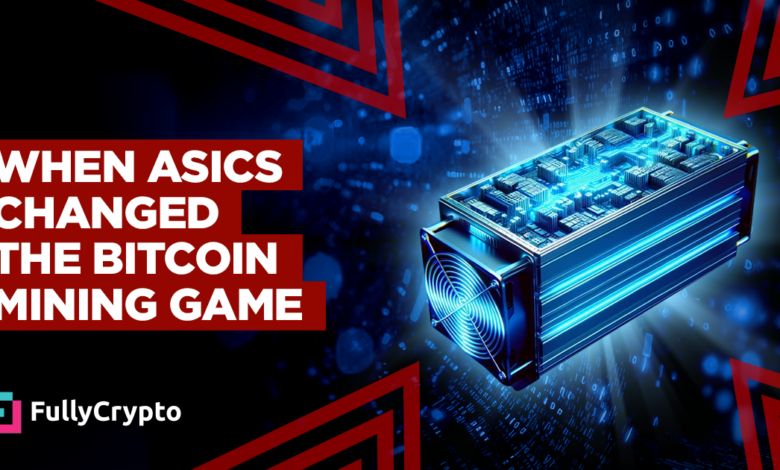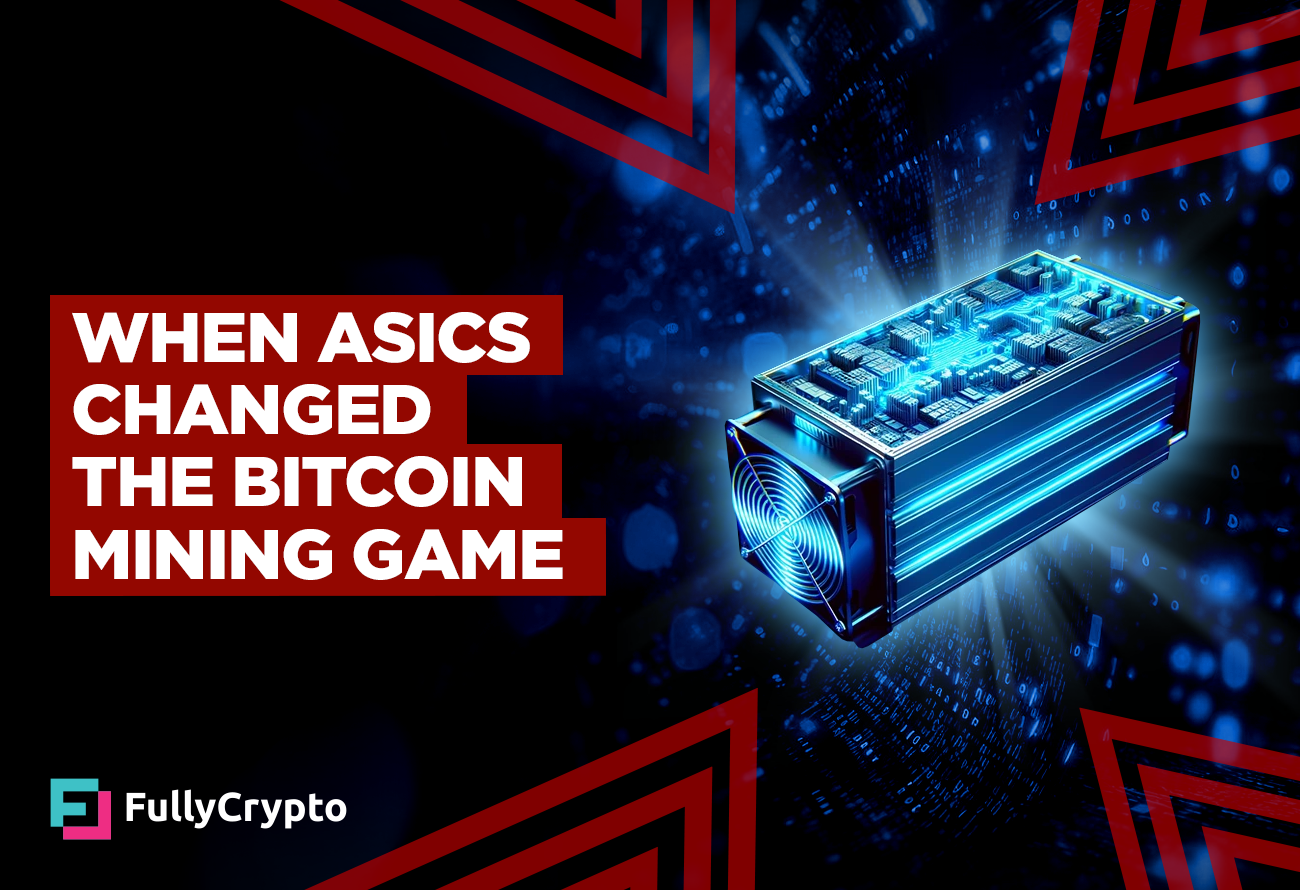When ASICS Changed the Bitcoin Mining Game


Reading Time: 3 minutes
- The very first Bitcoin miners plied their trade with laptops and then computers with GPUs
- The Bitcoin mining scene changed forever when the first ASIC was introduced in 2013
- What are ASICs and how did they change the Bitcoin mining landscape?
There was a time, 15 years ago to be precise, when Bitcoin could be mined with a laptop. Satoshi Nakamoto is thought to have done this, as did early miners Dustin Trammell and Hal Finney. It didn’t take long for miners to transition to computers with GPUs (Graphics Processing Units) to make use of the extra power, a state which lasted until 2013 when the entire Bitcoin mining landscape changed for good when the first Application-Specific Integrated Circuit (ASIC) entered the fray. These beasts have been powering Bitcoin ever since, and given that they form the backbone of the Bitcoin system it’s important to know exactly what they are and how they work.
From Mini to McLaren
The first commercially available ASIC miner for Bitcoin was the Avalon ASIC, released by a company called Canaan Creative in January 2013. The Avalon ASIC miner was a significant breakthrough in mining technology, providing a substantial increase in mining efficiency and power compared to the best GPUs at the time.
To put this into perspective, let’s compare the Avalon ASIC miner to the top GPU mining hardware available before its release. One of the most powerful GPUs used for mining in 2012 was the AMD Radeon HD 5970, which had a hash rate of approximately 800 megahashes per second (MH/s).
The Avalon ASIC miner, on the other hand, delivered a hash rate of about 68 gigahashes per second (GH/s)—that’s a whopping 68,000 MH/s, roughly 85 times more powerful than the Radeon HD 5970. It’s not hard to see how this was a watershed moment in Bitcoin mining and one that will never be reversed.
How ASICs Work
So where does all this power come from? Unlike general-purpose computers or GPUs that can handle a variety of tasks, ASICs are designed to perform one specific function. In the context of cryptocurrency, this function is to solve complex mathematical problems required for mining. Their hardware is optimized for the specific algorithm used by a particular cryptocurrency; for Bitcoin, this algorithm is SHA-256.
Because ASICs are designed for a single purpose, they are extremely efficient. They can perform more calculations per second (hash rate) than other types of hardware, making them much more effective at mining. This high efficiency is a key advantage of ASIC mining machines, which can solve more puzzles in less time than CPUs or GPUs, increasing the chances of earning rewards.
Big Drinkers
It’s important to note that while ASICs are powerful, they also consume a lot of electricity. Their efficiency means that they use less power for the same amount of work compared to general-purpose machines, but the overall energy consumption is still significant. Today, the average American would spend approximately $3,700 per year on electricity to run a single Antminer S19 Pro ASIC miner continuously. A laptop, on the other hand, would cost just $68 per year to run. This gives another indication of just how much more powerful ASIC miners are than the laptop that Satoshi used to mine the first blocks.
ASIC mining machines have revolutionized the way cryptocurrencies are mined by offering unparalleled efficiency and speed. Their specialized nature makes them the preferred choice for serious miners, who often run thousands of machines continuously, with companies such as Canaan and Bitmain fighting it out to get the performance edge over their rivals, increasing output while reducing costs.



